#types of divination
Text
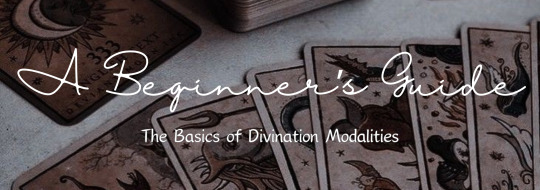
Magicians! Whether you're drawn to tarot cards, crystal balls, or pendulums, there's a divination method out there for everyone. Let's dive into this long post about divination and explore everything you need to know to get started! 🌟
🃏 Tarot Cards:
History: Tarot cards have a rich history dating back to the 15th century, originally used for playing card games. Over time, they evolved into a powerful tool for divination and spiritual insight.
Early Origins: Tarot cards likely originated in the 15th century in Europe, possibly in Italy or France. The earliest known tarot decks were hand-painted luxury items commissioned by wealthy families. These early decks, such as the Visconti-Sforza Tarot and the Tarot de Marseille, were not intended for divination but rather for playing card games similar to modern-day bridges.
Tarot as a Divinatory Tool: By the 18th century, tarot cards began to be used for divination and spiritual purposes. Influential occultists and mystics, such as Antoine Court de Gébelin and Etteilla, popularized the idea that tarot cards held hidden esoteric meanings and could be used for fortune-telling and self-discovery.
The Rider-Waite-Smith Tarot: One of the most iconic and influential tarot decks is the Rider-Waite-Smith Tarot, first published in 1910 by occultist Arthur Edward Waite and artist Pamela Colman Smith. This deck introduced innovative imagery and symbolism, including illustrated scenes on the minor arcana cards, which revolutionized the way tarot was interpreted and understood.
Tarot in Modern Occultism: In the 20th century, tarot experienced a resurgence in popularity within the occult and New Age communities. Influential figures such as Aleister Crowley and Carl Jung explored the psychological and symbolic significance of tarot, further cementing its place as a tool for spiritual insight and personal growth.
Tarot Today: Today, tarot continues to thrive as a popular tool for divination, meditation, and self-reflection. There are countless tarot decks available, ranging from traditional to modern, each with its unique artwork and symbolism. Tarot readers use the cards to explore themes such as love, career, spirituality, and personal development.
💭 Uses: Tarot cards offer guidance, clarity, and introspection. Each card carries its symbolism and meaning, allowing you to tap into your intuition and explore past, present, and future energies.
🃏 Divination: This is perhaps the most well-known use of tarot cards. Divination involves using the cards to gain insight into a specific question or situation. Tarot readers interpret the symbolism and imagery of the cards to provide guidance, clarity, and potential outcomes. Divination readings can focus on various aspects of life, including love, career, relationships, and spiritual growth.
🔍 Self-Reflection and Insight: Tarot cards can serve as powerful tools for self-reflection and introspection. By pulling cards and reflecting on their meanings, individuals can gain insights into their thoughts, emotions, and subconscious mind. Tarot readings can help illuminate patterns, beliefs, and behaviors that may be influencing their lives, allowing for personal growth and transformation.
📖 Decision-Making and Problem-Solving: Tarot cards can be used to help make decisions or solve problems. Individuals can consult the cards for guidance and clarity when faced with a dilemma or uncertainty. Tarot readings can provide different perspectives, highlight potential obstacles or opportunities, and help individuals make more informed choices.
💭 Journaling and Creative Expression: Some people use tarot cards as prompts for journaling or creative expression. They may pull a card each day and write about how its symbolism relates to their experiences, emotions, or goals. Tarot cards can inspire creative projects, artwork, poetry, or storytelling by tapping into the archetypal imagery and themes depicted in the cards.
🙏 Spiritual Development and Meditation: Tarot cards can be incorporated into spiritual practices and meditation routines. Some individuals use tarot cards as focal points for meditation, gazing at the imagery to quiet the mind and deepen their connection to their intuition or spiritual guides. Tarot readings can also be used as part of ritual ceremonies or spiritual rituals to invoke specific energies or intentions.
🌟 Relationship Building and Communication: Tarot cards can be used to build deeper connections and facilitate communication in relationships. Couples or friends may use tarot cards to explore their dynamics, deepen their understanding of each other, and foster open and honest communication. Tarot readings can provide a shared language for discussing feelings, desires, and aspirations.
🧘Manifestation and Goal Setting: Some people use tarot cards as tools for manifestation and goal setting. They may pull cards to clarify their intentions, visualize their desires, and identify action steps to manifest their goals. Tarot readings can help individuals align their thoughts, beliefs, and actions with their desires, empowering them to change their lives positively.
Do's: Trust your intuition, keep an open mind, and approach each reading with respect and reverence.
✅ Set Clear Intentions: Before conducting a tarot reading, take a moment to set clear intentions for the session. Focus on the specific questions or areas of your life you'd like to explore and the guidance you're seeking from the cards.
✅ Cultivate a Sacred Space: Create a sacred and peaceful environment for your tarot readings. Light candles, burn incense or play soft music to enhance the ambiance and set the mood for your practice.
✅ Trust Your Intuition: Tarot readings are as much about intuition as they are about interpretation. Trust your instincts and the messages you receive from the cards. Pay attention to your inner voice and how the cards resonate with your feelings and experiences.
✅ Respect the Cards: Treat your tarot cards with care and respect. Store them in a protective pouch or box when not in use, and avoid handling them with dirty or oily hands. Regularly cleanse and consecrate your cards to maintain their energy and integrity.
✅ Practice Regularly: Like any skill, tarot reading requires practice and dedication. Commit to practicing regularly, even if it's just pulling a daily card or conducting readings for friends and family. The more you work with the cards, the deeper your connection and understanding will become.
✅ Journal Your Readings: Keep a tarot journal to record your readings, interpretations, and insights. Reflect on the messages you receive from the cards and how they resonate with your life. Journaling can help you track your progress, identify patterns, and deepen your understanding of the cards.
✅ Seek Learning and Growth: Tarot is a lifelong journey of learning and exploration. Invest in books, courses, or workshops to deepen your knowledge of tarot symbolism, spreads, and techniques. Surround yourself with a supportive community of fellow tarot enthusiasts to share insights and experiences.
Don'ts: Avoid reading for yourself when in a highly emotional state or seeking answers to overly specific questions. Remember, the cards provide guidance, not concrete predictions.
❌ Don't Read When Emotionally Distressed: Avoid conducting tarot readings when you are feeling highly emotional, anxious, or distressed. Emotions can cloud your judgment and intuition, leading to inaccurate readings or misinterpretations of the cards.
Don't Rely Solely on the Cards: While tarot cards can offer valuable insights and guidance, they should not be seen as infallible or deterministic. Use your judgment, common sense, and critical thinking skills when interpreting the cards and making decisions based on their guidance.
❌ Don't Read for Others Without Permission: Always seek permission before conducting a tarot reading for someone else. Respect their boundaries and privacy, and refrain from prying into sensitive or personal matters without their consent.
Don't Give Unsolicited Advice: Tarot readings are not a substitute for professional advice or therapy. Avoid giving unsolicited advice or making predictions about someone else's future, especially if it could cause harm or distress.
❌ Don't Fear Negative Cards: Every tarot deck contains cards with both positive and challenging symbolism. Don't be afraid of so-called "negative" cards like the Death or Tower card. Instead, embrace them as opportunities for growth, transformation, and new beginnings.
❌ Don't Ignore Your Intuition: If something doesn't feel right during a tarot reading, trust your intuition and proceed with caution. Take breaks when needed, and don't push yourself to continue if you're feeling uncomfortable or overwhelmed.
❌ Don't Become Obsessive: While tarot can be a valuable tool for self-reflection and insight, avoid becoming overly reliant on the cards or obsessed with seeking answers to every question or concern. Balance your tarot practice with other forms of self-care, mindfulness, and spiritual exploration.
🔮Crystal Ball Scrying:
History: Crystal ball scrying dates back to ancient civilizations, including ancient Egypt and Celtic cultures. It involves gazing into a crystal ball to receive visions or insights.
📜 Ancient Roots: The practice of scrying dates back thousands of years and can be found in cultures across the globe. Ancient civilizations such as the Egyptians, Greeks, Romans, and Druids all had forms of divination involving reflective surfaces or natural objects. These practices often involved seeking guidance from spirits, deities, or ancestors through the act of gazing into a reflective medium.
🏛️ Medieval Europe: Crystal ball scrying gained popularity during the Middle Ages in Europe, particularly among alchemists, astrologers, and mystics. It was believed that certain stones, such as quartz crystals, possessed mystical properties and could serve as conduits for receiving divine or spiritual messages. Crystal balls became associated with the concept of the "scrying mirror," a tool for accessing hidden knowledge and insights beyond the physical realm.
⏳ Renaissance and Occult Revival: During the Renaissance and the occult revival of the 19th century, crystal ball scrying experienced a resurgence of interest among mystics, occultists, and spiritual seekers. Influential figures such as John Dee, Edward Kelley, and Aleister Crowley explored the practice of scrying as a means of contacting spirits, exploring the subconscious mind, and gaining occult knowledge.
🌍 Victorian Era and Spiritualism: Crystal ball scrying gained popularity during the Victorian era, particularly within the spiritualist movement. Mediums and psychics used crystal balls as tools for communicating with the spirit world and conducting seances. The crystal ball became synonymous with the image of the "fortune-teller" or "gypsy" depicted in popular culture and folklore.
📚 Modern Practice: Today, crystal ball scrying continues to be practiced by psychics, mediums, and individuals interested in divination and spiritual exploration. While traditional crystal balls made of quartz or glass are still used, practitioners may also use other reflective surfaces such as mirrors, black obsidian, or bowls of water. Crystal ball scrying is often incorporated into rituals, meditation practices, or psychic readings as a means of accessing intuitive insights and guidance.
Uses: Crystal ball scrying is a powerful method for accessing the subconscious mind and receiving intuitive guidance. It can be used for divination, meditation, and spiritual exploration.
🔮 Divination: The primary use of crystal ball scrying is for divination, or gaining insight into past, present, or future events. By gazing into the crystal ball and allowing the mind to relax and enter a meditative state, practitioners may receive intuitive impressions, symbols, or visions that provide guidance, clarity, and understanding. Crystal ball readings can address a wide range of questions or concerns, including love, career, health, and spiritual growth.
💬 Personal Reflection: Crystal ball scrying can be used for personal reflection and introspection. By gazing into the crystal ball and allowing thoughts and images to arise spontaneously, individuals can gain insights into their emotions, beliefs, and subconscious minds. Crystal ball scrying can help individuals explore their innermost thoughts, fears, and desires, leading to greater self-awareness and personal growth.
🙏 Spiritual Exploration: Crystal ball scrying can serve as a tool for spiritual exploration and connection. Some practitioners use the crystal ball to commune with spirit guides, angels, or ancestors, seeking wisdom, guidance, and inspiration from the spiritual realm. Crystal ball scrying can facilitate a deeper connection to one's intuition, higher self, or spiritual allies, fostering a sense of inner peace, alignment, and purpose.
Problem-Solving and Decision-Making: Crystal ball scrying can be used as a tool for problem-solving and decision-making. By focusing on a specific question or dilemma and gazing into the crystal ball, individuals may receive insights, solutions, or alternative perspectives that help them make informed choices or overcome obstacles in their lives. Crystal ball scrying can provide clarity, direction, and confidence when facing difficult decisions or challenges.
💡 Energy Healing: Some practitioners use crystal ball scrying as part of energy healing or therapeutic practices. By incorporating the crystal ball into meditation or visualization, individuals can channel healing energy and intention through the crystal, promoting relaxation, balance, and harmony on physical, emotional, and spiritual levels. Crystal ball scrying can enhance the healing process and support overall well-being and vitality.
🌟 Ritual and Ceremony: Crystal ball scrying can be incorporated into ritual and ceremonial practices as a means of invoking spiritual energies, setting intentions, or communing with the divine. Some traditions use the crystal ball as a focal point for meditation, prayer, or spellcasting, harnessing its reflective properties to amplify intention and manifest desired outcomes. Crystal ball scrying can enhance the sacredness and potency of ritual practices, deepening the practitioner's connection to the divine and the unseen realms.
Do's: Create a sacred space, cleanse your crystal ball before use, and practice relaxation techniques to quiet the mind.
✅ Prepare Your Space: Create a calm and sacred space for your scrying practice. Dim the lights, burn incense or candles, and eliminate distractions to create an environment conducive to relaxation and focus.
✅ Cleanse and Charge Your Crystal Ball: Before each scrying session, cleanse your crystal ball to remove any negative or stagnant energies it may have absorbed. You can cleanse it with smoke (such as herb bundles of cedar, garden sage, or rosemary), sound (using a singing bowl or bell), or by placing it under running water. Once cleansed, charge the crystal ball with your intention or positive energy.
✅ Set Clear Intentions: Clarify your intentions before beginning your scrying session. Think about the questions or areas of your life you'd like to explore and focus your energy and attention on receiving guidance and insights from the crystal ball.
✅ Relax and Clear Your Mind: Relax your body and mind before gazing into the crystal ball. Practice deep breathing or meditation techniques to quiet your thoughts and enter a receptive state of awareness. Release any expectations or preconceived notions, allowing yourself to be open to whatever messages or images may arise.
✅ Trust Your Intuition: Trust your inner guidance and intuition during the scrying process. Pay attention to any impressions, feelings, or images that come to you as you gaze into the crystal ball. Trust that the messages you receive are meaningful and relevant to your journey.
✅ Journal Your Insights: Keep a journal to record your scrying experiences, insights, and interpretations. Writing down your impressions can help you track patterns, themes, and symbols that emerge over time, deepening your understanding of the messages received from the crystal ball.
Don'ts: Avoid forcing visions or expecting immediate results. Patience and practice are key when it comes to crystal ball scrying.
❌ Force the Process: Avoid trying to force or control the scrying process. Allow the images and impressions to arise naturally, without imposing your will or expectations onto the experience. Trust that the messages will come to you in their own time and in their way.
❌ Scry When Emotionally Distressed: Refrain from scrying when you're feeling highly emotional, anxious, or stressed. Strong emotions can cloud your judgment and intuition, making it difficult to receive clear and accurate guidance from the crystal ball.
❌ Obsess Over Negative Images: If you encounter negative or unsettling images during your scrying session, don't dwell on them or become fixated on their meaning. Instead, acknowledge the images and release them with love and compassion. Focus on inviting positive and uplifting energy into your space.
Interpret Too Literally: Avoid interpreting the images or symbols in the crystal ball too literally. Instead, focus on the overall feeling or message conveyed by the imagery. Allow your intuition to guide you in discerning the deeper meaning behind the symbols and their relevance to your life.
❌ Compare Your Experience to Others: Every scrying experience is unique to the individual. Avoid comparing your experience to that of others or seeking validation from external sources. Trust in your insights and interpretations, knowing that you are the ultimate authority on your spiritual journey.
❌ Overuse or Depend Solely on the Crystal Ball: While crystal ball scrying can be a valuable tool for spiritual growth and insight, avoid becoming overly reliant on the crystal ball or using it as a crutch. Balance your scrying practice with other forms of divination, meditation, and self-reflection to maintain a holistic approach to your spiritual development.
⚖️ Pendulum Divination:
History: Pendulum divination has been used for centuries to seek answers and guidance from the subconscious mind. It involves suspending a pendulum over a surface and interpreting its movements.
📜 Ancient Origins: Dowsing, the broader term encompassing pendulum divination, has ancient roots and is believed to have originated independently in different cultures. Archaeological evidence suggests that dowsing tools, such as forked branches or rods, were used by ancient civilizations for locating water sources, minerals, and other hidden resources. Dowsing was often practiced by individuals known as "water witches" or "diviners" who possessed a special sensitivity to subtle energies or vibrations in the earth.
🏛️ Historical References: References to dowsing can be found in historical texts and records dating back thousands of years. For example, ancient Egyptian texts describe the use of dowsing rods for finding water and minerals, while ancient Chinese texts mention the use of divining rods for locating underground sources of water. Dowsing was also practiced by European cultures during the Middle Ages and Renaissance periods, where it was used for everything from locating buried treasure to identifying witches.
⏳ Renaissance and Enlightenment: During the Renaissance and Enlightenment periods, dowsing experienced a resurgence of interest and popularity among scholars, scientists, and natural philosophers. Figures such as Leonardo da Vinci, Sir Isaac Newton, and Paracelsus explored the phenomenon of dowsing and its potential applications in various fields. Dowsing was studied alongside other forms of natural philosophy and was often associated with concepts of magnetism, subtle energies, and the human psyche.
🌍 19th Century and Spiritualism: In the 19th century, dowsing became closely associated with the spiritualist movement, which emphasized communication with the spirit world and exploration of psychic phenomena. Mediums and psychics used pendulums as tools for divination, communication with spirits, and accessing intuitive insights. Pendulum divination was integrated into seances, spiritual healing practices, and other spiritualist rituals as a means of receiving guidance and validation from the unseen realms.
📚 Modern Practice: Today, pendulum divination remains a popular and widely practiced form of divination, utilized by people of various spiritual and cultural backgrounds. Pendulums come in a variety of shapes, sizes, and materials, including metal, wood, and crystal. Practitioners use pendulums for a wide range of purposes, including divination, decision-making, energy healing, and spiritual exploration. Pendulum divination is often integrated into holistic healing modalities such as Reiki, chakra balancing, and aura cleansing, as well as used in conjunction with other forms of divination such as tarot cards or astrology.
Uses: Pendulums can be used for yes/no questions, dowsing, and accessing intuitive knowledge. They are versatile tools for divination and spiritual exploration.
⚖️ Answering Questions: One of the primary uses of pendulum divination is to seek answers to questions. By asking yes/no questions and observing the movement of the pendulum, practitioners can receive guidance and insight into various aspects of their lives, including relationships, careers, health, and spiritual matters. Pendulum divination can provide clarity and direction when faced with difficult decisions or uncertainties.
🕰️ Decision-Making: Pendulum divination can be a helpful tool for making decisions. Practitioners can use the pendulum to weigh different options, evaluate potential outcomes, and determine the best course of action. By tuning into their intuition and allowing the pendulum to guide them, individuals can make more informed choices that align with their highest good.
💫 Problem-Solving: Pendulum divination can assist in problem-solving and troubleshooting. By focusing on a specific issue or challenge and asking targeted questions, practitioners can uncover underlying causes, identify solutions, and overcome obstacles more effectively. Pendulum divination can reveal hidden insights and perspectives that may not be immediately apparent, leading to creative solutions and breakthroughs.
🌀 Aura and Energy Work: Pendulum divination can be incorporated into energy healing and aura work. Practitioners can use the pendulum to detect and assess subtle energy patterns, blockages, or imbalances within the body's energy field. By observing the movement of the pendulum, individuals can identify areas of tension or stagnation and channel healing energy to restore balance and harmony on physical, emotional, and spiritual levels.
🌈 Personal Growth and Self-Discovery: Pendulum divination can serve as a tool for personal growth and self-discovery. By asking questions related to inner thoughts, emotions, and beliefs, individuals can gain insight into their subconscious mind and explore areas of self-improvement and healing. Pendulum divination can help individuals uncover limiting beliefs, release emotional blocks, and cultivate greater self-awareness and empowerment.
🌟Spiritual Exploration: Pendulum divination can be used for spiritual exploration and connection. Practitioners can use the pendulum to communicate with spirit guides, angels, or higher consciousness, seeking guidance, wisdom, and support from the spiritual realms. Pendulum divination can deepen one's connection to the divine and facilitate a greater sense of trust, faith, and alignment with universal energies.
Do's: Establish clear communication with your pendulum, ask concise questions, and trust the answers you receive.
✅ Set Clear Intentions: Before beginning a pendulum divination session, take a moment to set clear intentions for the process. Clarify the questions or areas of your life you'd like to explore and the guidance you're seeking from the pendulum. Focus your energy and attention on receiving clear and accurate answers.
✅ Choose a Suitable Pendulum: Select a pendulum that resonates with you energetically and feels comfortable to use. Pendulums come in various shapes, sizes, and materials, so choose one that feels intuitively right for you. You may also choose to cleanse and consecrate your pendulum before using it to remove any previous energies and imbue it with your intention.
✅ Establish Clear Communication: Before beginning your divination session, establish clear communication with your pendulum. Hold the pendulum in your hand and ask it to show you a clear and accurate response for "yes" and "no" movements. Observe how the pendulum responds to different questions and affirmations, trusting the movements as indications of intuitive guidance.
✅ Practice Grounding and Centering: Ground and center yourself before engaging in pendulum divination. Take a few deep breaths, visualize roots extending from your body into the earth, and imagine yourself surrounded by a protective bubble of light. Grounding helps to stabilize your energy and enhance your connection to the pendulum and your intuition.
✅ Trust Your Intuition: Trust your inner guidance and intuition throughout the pendulum divination process. Pay attention to any intuitive impressions, feelings, or insights that arise as you work with the pendulum. Trust that the messages you receive are meaningful and relevant to your situation, even if they may not always align with your expectations.
✅ Maintain Respect and Ethical Conduct: Treat the pendulum with respect and reverence as a sacred tool for divination. Approach the process with sincerity, honesty, and integrity, refraining from asking frivolous or inappropriate questions. Avoid using pendulum divination to manipulate or control others or to pry into sensitive or private matters without their consent.
Don'ts: Avoid relying solely on the pendulum for major life decisions or asking questions that are too vague or ambiguous.
❌ Don't Engage When Emotionally Distressed: Avoid engaging in pendulum divination when you're feeling highly emotional, anxious, or stressed. Strong emotions can cloud your judgment and intuition, leading to inaccurate or unreliable readings. Wait until you're in a calm and centered state before using the pendulum for divination.
❌ Don't Rely Solely on the Pendulum: While the pendulum can be a valuable tool for accessing intuitive guidance, avoid becoming overly reliant on it or using it as a substitute for your inner wisdom. Use the pendulum as a complementary tool alongside your intuition, critical thinking skills, and common sense when making decisions or seeking guidance.
❌ Don't Forget to Ground and Close: After completing a pendulum divination session, remember to ground yourself and close your energy. Thank the pendulum for its guidance and assistance, and express gratitude for the insights received. Release any residual energy or attachments and return to a grounded state of awareness before continuing with your day.
❌ Don't Obsess Over Negative Outcomes: If you receive a negative or unsettling response from the pendulum, don't dwell on it or become overly fixated on the outcome. Remember that pendulum divination is a tool for guidance and insight, not a predictor of fixed outcomes. Trust that the messages you receive are meant to serve your highest good and empower you to make informed choices.
❌ Don't Compare Your Results to Others: Every individual's experience with pendulum divination is unique. Avoid comparing your results or interpretations to those of others, as each person's energy, intuition, and circumstances are different. Trust in your intuition and interpretation of the pendulum's movements, knowing that you are the ultimate authority on your spiritual journey.
There are other modalities that I haven't covered in depth. Let's touch a bit on each of these main ones:
Scrying: Scrying is a broad term encompassing various divinatory practices involving gazing into reflective surfaces or mediums to receive insights or visions. In addition to crystal ball scrying, other forms of scrying include using mirrors, water, fire, smoke, or black mirrors to access intuitive guidance and symbolic imagery. I touched on specifically crystal ball scrying, but there are many other types of scrying to fit your needs, the basics are mostly the same.
Astrology: Astrology is the study of celestial bodies' positions and movements to interpret their influence on human affairs and natural phenomena. Astrologers use birth charts, horoscopes, and planetary alignments to provide insights into personality traits, life events, and compatibility.
Numerology: Numerology is the study of numbers and their symbolic meanings. Numerologists analyze numbers associated with names, birthdates, and events to uncover insights into personality, life paths, and potential outcomes. Numerology can involve calculations such as life path numbers, destiny numbers, and personal year cycles.
Palmistry: Palmistry is the practice of reading the lines, shapes, and markings on the palms of the hands to gain insight into personality traits, life events, and potential future outcomes. Palmists examine features such as palm lines (e.g., heart line, head line), mounts, and finger shapes to provide interpretations.
Runes: Runes are ancient symbols used in divination, originating from Germanic and Norse cultures. Runecasters typically use sets of carved stones or wooden tiles inscribed with runic symbols. By casting or drawing runes and interpreting their positions and meanings, practitioners can gain insights into various aspects of life and decision-making.
Tea Leaf Reading (Tasseography): Tasseography is the practice of interpreting patterns and symbols formed by tea leaves at the bottom of a cup or vessel. Practitioners observe the shapes, lines, and arrangements of the tea leaves to provide insights into future events, emotions, and outcomes.
Cartomancy: Cartomancy is the practice of using regular playing cards or specialized decks (other than tarot cards) for divination purposes. Practitioners interpret the suits, numbers, and symbols on the cards to provide insights into past, present, or future events and circumstances.
Dream Interpretation: Dream interpretation involves analyzing the symbols, themes, and emotions present in dreams to gain insights into the dreamer's subconscious mind and waking life. Dream interpreters use various techniques and frameworks to interpret dreams and uncover their meanings and messages.
I primarily use tarot and pendulum divination as well as black mirror scrying, however, the basic understanding of many types of divination can allow you to become a well-rounded practitioner.
#queue the magick#witch#witchcraft#witchblr#magickkate#reference#witchy#divination#types of divination#tarotblr#tarot reading#pendulum#scrying#witch aesthetic#witchy vibes#witches#beginner witch#witch tips#witchcraft 101#witchcraft community#witchyvibes#witchy shit#witches of tumblr#witchcore#witch community#witch blog#witchtok
139 notes
·
View notes
Text
Basic Intro to Types of Divination
What is divination?
The definition of divination is “the practice of determining the hidden significance or cause and of events”.
In my own words, divination is a practice in which you can learn more about the unknown in your life and help others know about the unknown in theirs.
What are the most common types of divination?
The most common types of divination (and the ones that will be detailed in this post) are:
•Cartomancy
•Channeling
•Oracle
•Pendulum
•Shufflemancy
•Tarot
Cartomancy:
Origins on cartomancy
It is unknown exactly where cartomancy originated from, as the earliest deck of cards date back to the 9th century, but we have been able to trace this practice as far back as to Europe during the 1360’s. Cartomancy gained popularity in the time between the 18th and 20th century due to its “fortune-telling” abilities.
What is cartomancy?
Cartomancy is the practice of divination using a deck of standard playing cards.
How to practice cartomancy
Begin by acquiring yourself a deck of cards, it can be literally any deck in sight if you wish.
Cleanse your deck before use, and then you’re good to go!
Begin shuffling your cards in any way you wish, and as you draw cards (or as they fly out, depending on how you prefer to do divination) lay them in the order that they are drawn and once you feel you have drawn enough cards, begin to interpret them.
Interpreting cards takes practice, so don’t be discouraged if you find it difficult at first, it will progress and become easier as you go.
Card meanings:
[cartomancy meanings|https://newworldwitchery.files.wordpress.com/2010/09/the-new-world-witchery-guide-to-cartomancy.pdf]
Channeling:
Origins of channeling
Channeling origins are genuinely the most blurry of all of the forms of divination presented in this post. Channeling began as a way to communicate with the dead, but grew into what we know it as today.
Around 1000 BCE, channeling was under serious assault because of monotheism, as the practice was considered dangerous.
Although, channeling does not have one specific origin (as with many other types of divination) it is thought that Ancient Egypt is the birthplace of trance-channeling and dream-channeling.
What is Channeling?
Channeling is a way to contact beings from other realities or even your spirit guides/higher selves!
How to Channel
There are many different ways to channel. Personally, I channel telepathically, but you can do it in any way you wish.
It’s wise to get confirmation you’re channeling the correct person when channeling.
My personal channeling method:
1. Affirm protection and cleanse!
2. Begin by meditating for a minute and visualizing the person that you are attempting to channel
3. Imagining connecting with the person and feel their energy
4. Let the channeled session happen and then cut the connection
There are many different types of channeling so please research into the type of channeling you’re doing before you do it.
‼️DISCLAIMER‼️
With possession channeling, I highly suggest you do your own research into the safety of it and how to do it, please don’t just ask someone else for advice or jump right into possession channeling because it can be dangerous without the correct knowledge of it.
Oracle:
Origins of Oracle
Oracle, similar to tarot and cartomancy, originated in western europe (mostly france) during the 19th century. The first printed oracle cards were the Lenormand cards. These cards where used for psychic readings and spiritual guidance. soon, they gained popularity and became more common for use.
How to do Oracle Readings
First step is to find yourself a deck of oracle cards! You can make your own or order a deck online!
([Here|https://thetravelingwitch.com/blog/2018/4/17/how-to-create-a-beautiful-oracle-deck-in-8-steps ]a good post about how to make your own oracle deck)
You will cleanse and shuffle oracle cards the same way you do with tarot or cartomancy and interpret them according to your own guidebook if you’ve made your deck or the guidebook that came with your deck. As stated with cartomancy, interpreting may or may not come naturally to you, but don’t be discouraged, the more you practice the better you will become.
Pendulum
Origins of Pendulum
Pendulum origins as a divination and dowsing device date all the way back to 400 BCE, having been used by the Pythian Oracle of Delphi.
In 1833 Michel Eugene Chevreul researched the movement of pendulums and came to the conclusion that it was an involuntary movement of the hand or the wrist, causing the pendulum to swing. Pendulums respond with what your subconscious already knows by having your subconscious force small bodily reactions to have pendulums swing a certain way.
How to use pendulums/what you can use them for
With using a pendulum, you will want to hold it by whatever string/chain/etc it is attached to and then ask a question. If you’re asking yes/no I often like to put my palm under my pendulum to balance the energy more. Your pendulum will swing in a certain direction for yes and a certain direction for no, ask your pendulum which is which before doing divination with it!
Pendulums can also be used with a pendulum board to find names, numbers, etc. As well as finding lost objects, or guiding your way outside of your home.
Shufflemancy:
Origins of shufflemancy
Shufflemancy is the newest type of divination detailed in this post. Although I cannot find the exact origins, I would estimate it has not been very long since the origin of shufflemancy, and it likely came along with the creation of more advanced technology.
How to do shufflemancy
Begin by compiling a playlist of random songs. Make sure you have a wide-range of music, and many songs with many different meanings. This will most accurately give you answers.
Once this has been done, shuffle away! Press the shuffle button until you are content with the amount of times you’ve shuffled and look at the lyrics. Write down anything that stands out to you in these lyrics, and begin interpreting them in relation to your question.
Tarot
Origins of tarot
Tarot originates from a card game in Italy around the 1430s. This game added a 5th suite to the original 4 suite deck of cards (this 5th suite is now known as the major arcana). Divination with these cards became popular in the late 16th and 17th centuries, particularly in Europe around these times. In the 18th century, people had begun to assign specific meanings to each card.
How to do tarot
You will first want to acquire a tarot deck. Once you have done this, cleanse and bond with your deck before doing readings.
When doing readings shuffle your deck however you like. You can shuffle until it feels right and pull cards from the deck, or you can shuffle until cards fly out for you to take.
When you have gotten your cards that are associated with whatever question you are asking, you will interpret them. When interpreting tarot cards you can do it however you like to. Jump around, interpret in order, whatever it may be.
Tarot meanings:
https://labyrinthos.co/blogs/tarot-card-meanings-list] is a good site to discover the meanings of tarot cards.
I hope you enjoyed the post and that it helps you along in your divination journey! If you find any of this information to be correct as of your knowledge, or you have any questions, please feel free to pm or comment!
#divination#spirituality#witch#witchcraft#tarot#shufflemancy#pendulum#channeling#cartomancy#card reading#divination readings#divination tools#types of divination#oracle
14 notes
·
View notes
Text
Alphabet Divination Spells
Books are formed from words; words are formed from letters. One school of Kabbalah suggests that the Creator formed the entire world from Hebrew letters. Individual letters, of any alphabet, may be used to provide an oracle.
(from The Element Encyclopedia of 5,000 Spells by Judika Illes)
28 notes
·
View notes
Note
If you don't mind me asking, what kind of divination do you use in your craft?
I know you do tarot for sure, but what other divination methods do you do?
Is there one you haven't tried? And if so, would you be willing to test it out?
I don't mind at all!
I do tarot yes and cartomancy in general. I have oracle decks, and there's actually a playing card set themed around locations in my town that I want to get to expand on a location based divination technique I've tried with a pendulum. I do focus on tarot though with cartomancy.
The other main thing I do besides tarot is dream interpretation. I have had strange and vivid dreams, including a few prophetic ones, since I was pretty small. I remember them consistently and have focused on being able to remember them in even more detail. I have a lot of material to interpret pretty frequently lol.
I also use a pendulum every now and then, as I mentioned before. I know a bit about astrology specifically interpreting birth charts. I also know a little about palmistry and I've tried scrying, tasseomancy, runes, and bibliomancy.
I haven't had a need to incorporate any of the types of divination I mentioned trying into my consistent practices. But I do think I could do some interesting things with scrying and bibliomancy. I think they could fit into my practice quite nicely if I could put some time aside to experiment with them.
There's a whole bunch I haven't tried and I'd be open to trying for sure! They just haven't particularly come up, y'know? I'm not exactly a high energy person and can only focus on what I've already got going on and getting my needs met with divination and spell work.
Thanks for asking! 💕
6 notes
·
View notes
Text
idea: hands being tied in constant prayer, arms bound to my chest, head made to be bowing, forcibly trapped in worship
#had a vision of being led wround a kink event in this kind of tie by a divine-type dom while on a lead#also blindfolded. specifically a pretty one like layered lace. in some jind if habit or other religious wear ig whatever the dom would want#idk... just been thinking abt it...#signal broadcast 📺#t4t nsft#ftm nsft#trans nsft#ftm ns/fw#queer nsft#ftm sub#trans ns/fw#k!nk community#k!nk blog#k1nk blog#i wish i knew the religious kink tags
582 notes
·
View notes
Text
NEUVILLETTE YOU CAN'T JUST INTERRUPT SOMEONE'S ANIME TRANSFORMATION LIKE THAT
#genshin#genshin impact#fontaine#fontaine spoilers#fontaine archon quest#neuvillette#childe#ok jESUS WE GET IT MAN#but childe still aint beating the allegations#yeah his type is older men with potentially divine legacy who can decimate him instantly
2K notes
·
View notes
Text
I don’t think we’re examining closely enough the smalltalk helen and philip must have made while they were waiting for benoit to get out of the bath and dressed. what did they talk about. did philip offer her his homemade bread. did helen accept it. was it burned.
#glass onion#idk man from his .3 seconds on screen I've divined he's the type of guy to bounce around quarantine hobbies#and the majority of them turn out hazardously bad#knives out#benoit blanc#helen brand#daniel craig#Janelle Monáe#hugh grant#etal.txt
5K notes
·
View notes
Text

#procrastinated doing my job for an hour to make this in some sort of exercise of divine irony or something#worshitposting#sleep token#veep token#funny that he's literally doing his job in this picture but vessel seems like this type#tumblr absolutely demolishes colour saturation and quality i forgot its so annoying#i miss word art in microsoft word this is so sick this isn't exactly what i was envisioning but it will do#i have like a baker's dozen variations of this lmao
213 notes
·
View notes
Text
Criminal Minds Characters as Cocktails

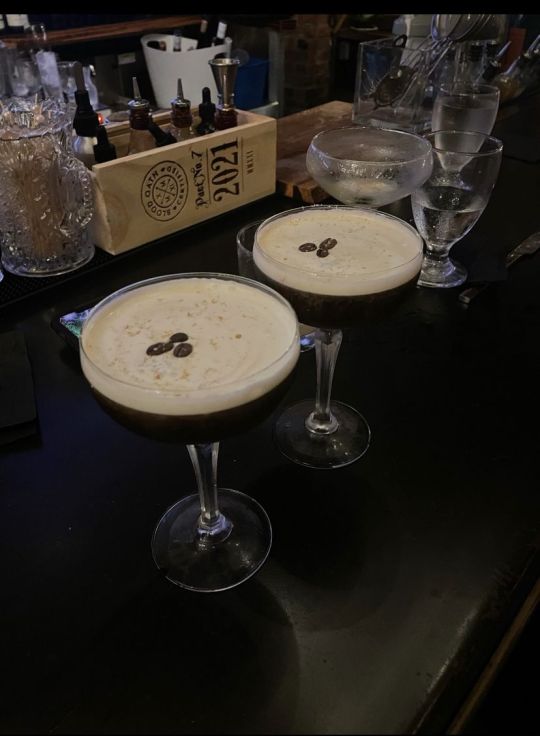

SPENCER REID - ESPRESSO MARTINI
vodka vanilla | coffee liqueur | brown sugar syrup | espresso



AARON HOTCHNER - OLD FASHIONED
bourbon | sugar | angostura bitters | orange twist



EMILY PRENTISS - AVIATION
gin | maraschino liqueur | simple syrup | lemon juice | crème de violette | cherry



DAVID ROSSI - NEGRONI
campari | gin | sweet vermouth



PENELOPE GARCIA - PORNSTAR MARTINI
vodka vanilla | passoã | passion fruit puree | pineapple juice | passion fruit half | prosecco
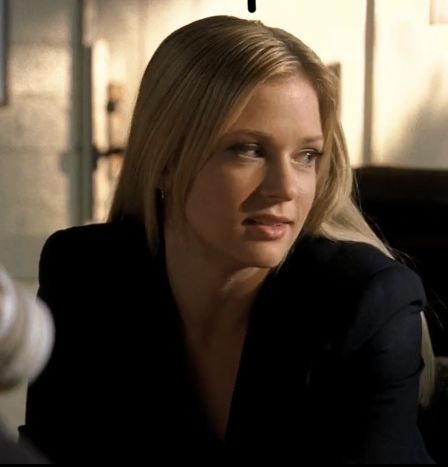

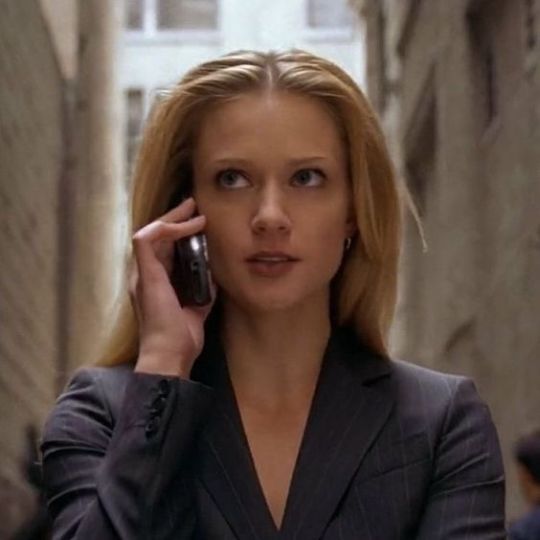
JJ JENNIFER JAREAU - GIN & TONIC
opihr gin | yuzu tonic | lime wheel



DEREK MORGAN - MAI TAI
dark rum | white rum | orange curacao | almond syrup | lime juice
PART 2
#source: im a bartender#criminal minds#ngl reid might straight up have absinthe with sugar#tbh i was struggling with morgan because he doesnt seem like the type who would order cocktails#omg i accidentally match garcia and morgan first pics <3#side note strawberry negroni is divine#spencer reid#david rossi#aaron hotchner#emily prentiss#jj#jennifer jareau#penelope garcia#derek morgan#headcanons#my fav cocktails are the first two#cocktail#tw: alcohol
767 notes
·
View notes
Text



#orikan the diviner#skitarii#oc#adeptus mechanicus#love orikan. wish i had his mini so i could use it as an art reference (crying)#anyway my dude. my oc. mu-15. i have lore. not typing any of it tho im shy#theres two of them.#it. its it/its (masc) btw#oc: mu-15#40k
261 notes
·
View notes
Text

#salamence#THIS one is a good one. someone else mentioned the chin and claimed they look like lord farquaad. and would say “why YES this is Divine” and#i didn't like how accurate that was. anyway dragon/flying 4x weakness to ice my belovèd. if anyone says ice is bad#keep in mind how much of the competitive landscape it totally nullifies. ice is like. probably my second favorite type. behind electric#even though none of this is about salamence. they've got the whole primary colors thing going on but minus yellow#red and blue. red white and blue. american pokémon? big red wings that're just Flat. i really dunno what's happening here i just know it's#supposed to be really good in competitive. and also they got a paradox form which i Guess TPC is trying to market as totally new unrelated#pokémon but i'm always going to call them “paradox hariyama” and such instead of ~iron hands~ or whatever they're supposed to be called#don't want my pokémon names to have two words in them……
651 notes
·
View notes
Text
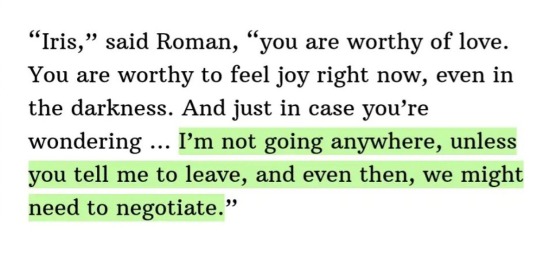
I hv a type
235 notes
·
View notes
Text
God Whumpee
It's honestly shocking how little there is on divine whump or more specifically, gods getting whumped so here's a list of some of my own ideas:
Consuming poisoned offerings
Another god trying to usurp their domain
Undergoing a slow demise due to the loss of their religion/domain and knowing they can't do anything about it
Committing a mistake and all the other gods turn against them because of it
Watching a demigod suffer and feeling guilty about it
Being punished by having their godhood stripped from them
Ruling over a domain that is feared, despised or mistrusted
Cursing someone (e.g. a worshipper, a demigod, a fellow god) in a fit of blind rage and regretting it later as they watch the consequences unfold
Having their reputation being unfairly tarnished because their followers keep misinterpreting their instructions for their own gain
Being betrayed by another god they trusted or didn't expect it from
A human suffering the process of deification as mortal flesh and brains can barely withstand so much power and knowledge
#god whumpees are definitely up there in my list of favourite types of whumpees#i'm actually writing a series about a god whumpee that i'm going to publish on my writing blog#gods#goddesses#goddex#gods and goddesses#god whumpee#god whump#deity whump#divine whump#whump#tw poison#cw poison#tw whump#whump prompts#whump writing#whump scenario#whump inspiration
76 notes
·
View notes
Text


Apparently I have a strong type when it comes to men in games made by Larian Studios.
Sassy, self-righteous, and undead.
#larian studios#divinity original sin 2#astarion#bg3 astarion#fane#fane dos2#please larian they're bad for my health#my tav should have been named Caprisun at this point#The fact i play an elf in divinity 2 and a drow in bg3 really adds to this type nonesense#baldur's gate 3
258 notes
·
View notes
Text
being called "god's favorite" while they toy with you >>>>>>>>>>>>>>>>>>>
#i came to this exact thought last night#i'm sooooo religious/divinity kink brained rn it's makingm e feel a type of way#i wanted to keep this vague tho cuz it could be while they're fucking u it could be while they're beating u#it could be while they're torturing u!#just being called god's favorite for real would make me go fucking cwazy#signal broadcast 📺#heirophilia#religion kink#divinity kink
424 notes
·
View notes
Text

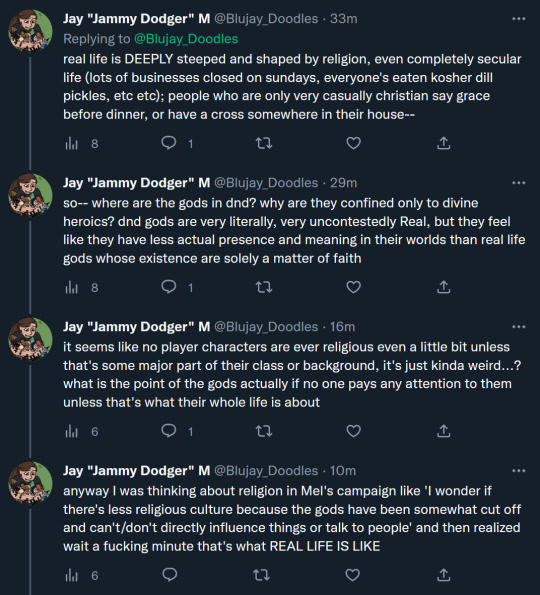
#I've played with irl atheists and catholics and everything in between#but it rarely feels like faith is a real factor for anyone-- DM or player#outside of‚ again‚ divine spellcasters and Big Epic Plot Things#I mean there are a couple of 'RAAAHGH FUCK THE GODS >:C' edgy backstory types but#no one is just Normally Culturally Religious and it's WEIRD#like it's not even a matter of faith in dnd! the gods are LITERALLY OBJECTIVELY PROVABLY REAL#so what does that MEAN for the average person! how does it shape language? business? culture?#where are the people wearing holy symbols like amulets-- or the way modern christians very casually wear crosses?#blessings over meals? prayers before bed? burnt offerings?#and like I enjoy thinking about world and culture building but I know that's A Whole Thing but even just like...#it doesn't feel like anyone believes in gods at all except clerics and paladins#like they DO because they factually exist but in the same way I 'believe in' like. the president of france.#like yeah he exists and is important to some people but has no bearing on my life whatsoever#that's such a fucking weird approach to the DIVINE in a polytheist world where those gods are YOUR CULTURE'S GODS??#I am bad at this myself but I'm not religious so it's harder for me to remember what Being Religious All The Time Casually is like lol#funny enough my character with the most intentionally religious background in this sense#is one of my ones who's ended up wrapped up in Big Plot God Things lmao#'aubree starts the campaign with a holy symbol of yondalla because of course she does why wouldn't she'#'oh okay well she's gonna get deeply and personally entangled with a bunch of death gods immediately' fdkjghkdf oh!! welp#you don't really pray to urogalan unless you're breaking ground for a new building or someone just died so it's STILL weird for her lol#but at least I had the framework there of 'oh yeah the gods exist and matter to me and my everyday life and culture' in general#about me#posts from twitter
743 notes
·
View notes